Text: Sabina Rosado Romero (Film in Granada)
Valeriano López (Huéscar, 1963) is an internationally known multidisciplinary artist. In 1996 he created the animated short film Estrecho adventure, where he shows with video game aesthetics the dangerous journey of a Moroccan to reach Spain.
It was followed by video creations such as Burquita Roja (2010), the exhibitions Aldea Fatal (1999) and Granada de mano (2006), the play La gitana superdotá (2015-16) or his well-known feature film Juana la Lorca (2021), which has passed through the festivals of Malaga, Festival Nuevo Cine Andaluz de Casares, RIZOMA Festival Internacional de Cine & Cultura Entrelazada and Taiwan International Queer Film Festival.
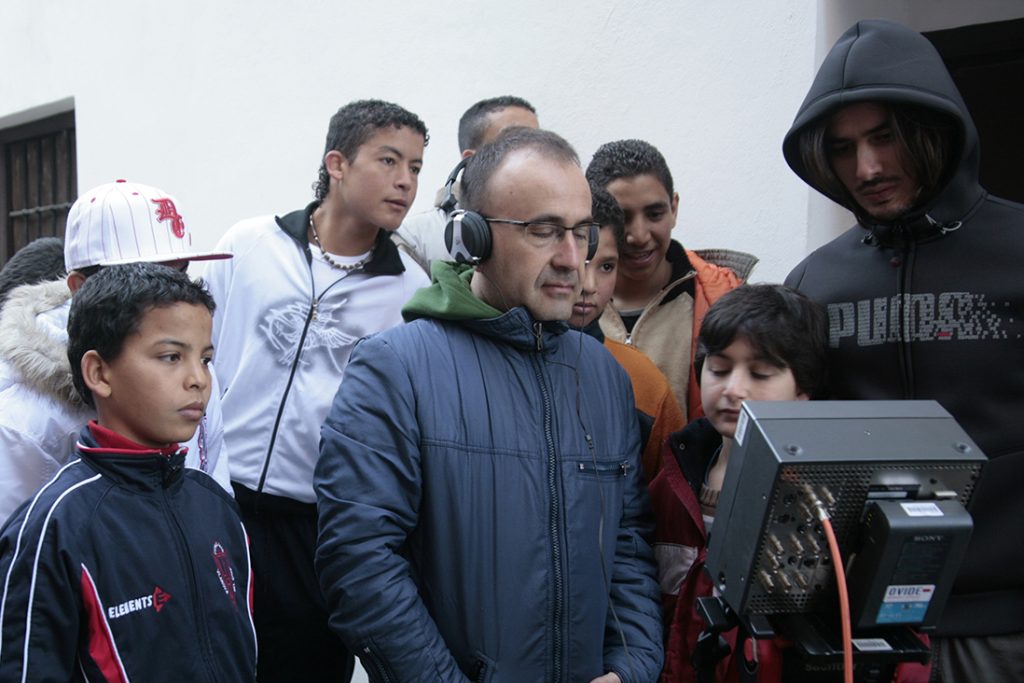
First of all, a sentimental question, how are you handling your divorce with Lorca?
I am getting over it. Juan de Loxa used to say that whoever enters into the Lorca’s universe ends up being overwhelmed. And that was happening to me. So, after five years of relationship and at the risk of ending up crazier than I should have been because of the obstacles by the family and local exegetes, on December 2, 2022 I formalized my divorce with the poet in a series of performances in different spaces of Granada, such as the Basilica of the Virgin of the Angustias, patron saint of the city, where I handed over my bouquet as a divorced lady, or the Chikito Restaurant, former Café Alameda, meeting place of the famous “tertulia” El Rinconcillo, where I celebrated my divorce banquet.
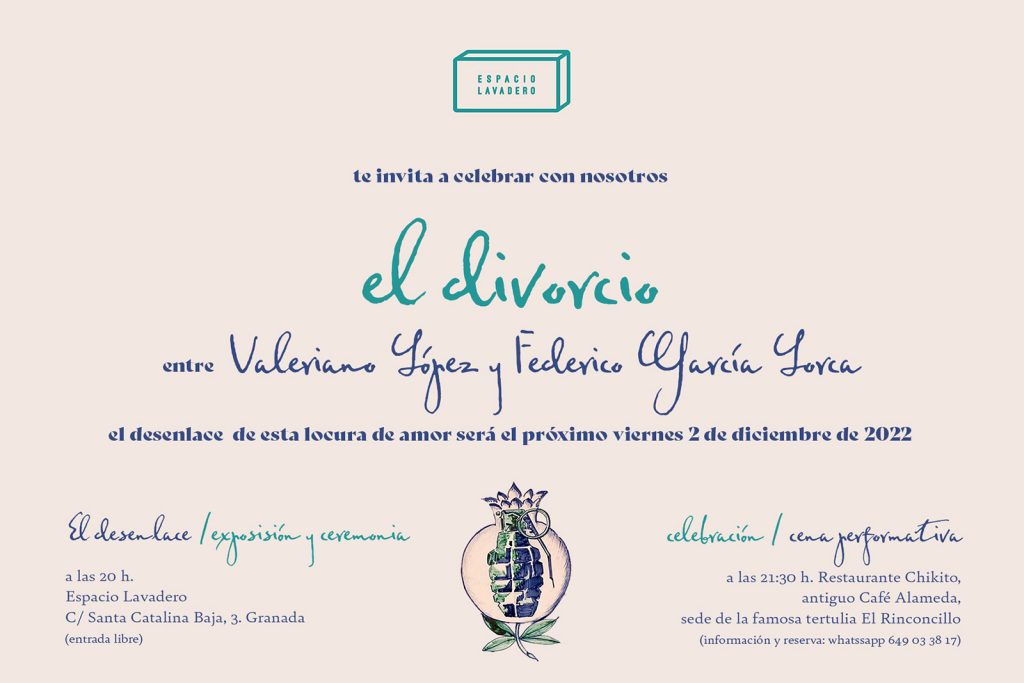
I would like to clarify that my story with Lorca took place in three acts: the presentation of the idyll took place at the Casa-Museo Huerta de San Vicente with the project Nadivlo Et On Sonisesa Sut; the romance became more complicated with the arrival of the ingenious Juana la Lorca; the outcome called for a public pact to settle this madness of love and return Lorca to the altar.
Normally, when you start a series, a videocreation, a film… What is the process from the beginning of the idea until it materializes?
In my case, ideas do not sprout by themselves. I start a project when there is a subject that interests me, worries me, touches me… From there, I make a thematic immersion that sometimes reaches abyssal levels without “the idea” appearing. In those cases I don’t usually materialize an artistic proposal, but everything is circumscribed to the scope of my own experience and the context in which I have immersed myself. But if the idea finally appears, everything goes smoothly; it is a matter of work and of surrounding oneself with the necessary collaborators. What I find painful is the exhibition, exposition or distribution of the piece. Not even talking about selling it.
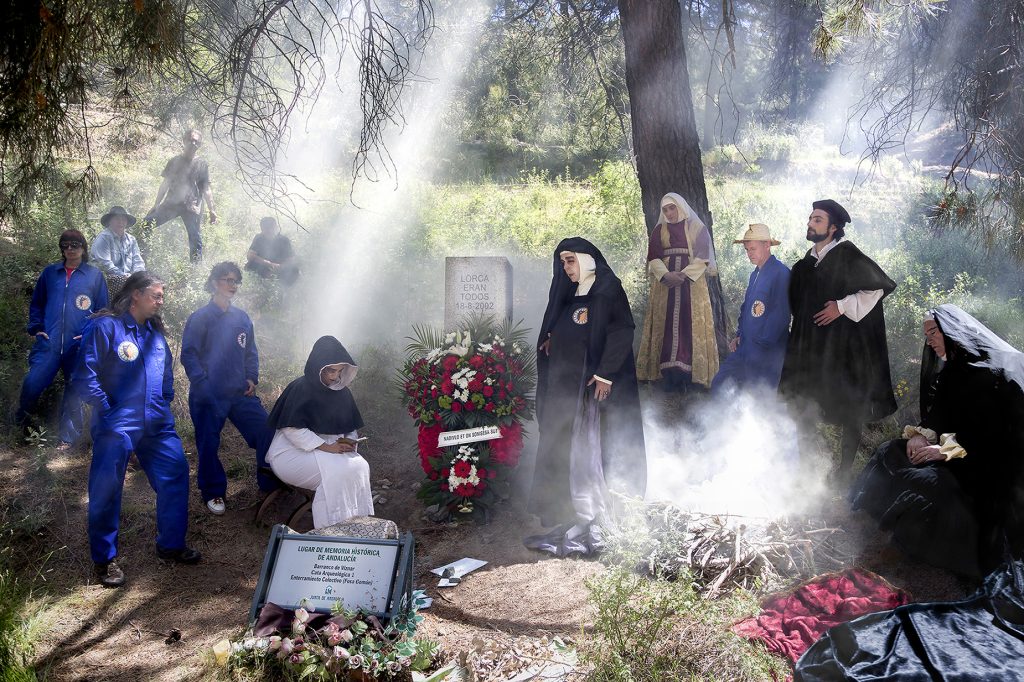
Who would you consider your main audiovisual references and how have they influenced your work?
There are too many and, in many cases, irreconcilable. For example, for the film Juana la Lorca I had Pere Portabella‘s Mudanza on the horizon, in which he empties the Huerta de San Vicente, García Lorca’s House-Museum, of belongings and objects to show the significant absence of the poet and his fetishization; the metalinguistic game of Juana la Lorca is close to what Juan Carlos Tabío does in Plaff; the queer activism comes more from authors like Pedro Lemebel than from the cinematographic field itself; as a celebration of life and bodies, I have had as reference the Trilogia della vita‘s Pasolini; the merciless satire is heir to, among others, Berlanga.
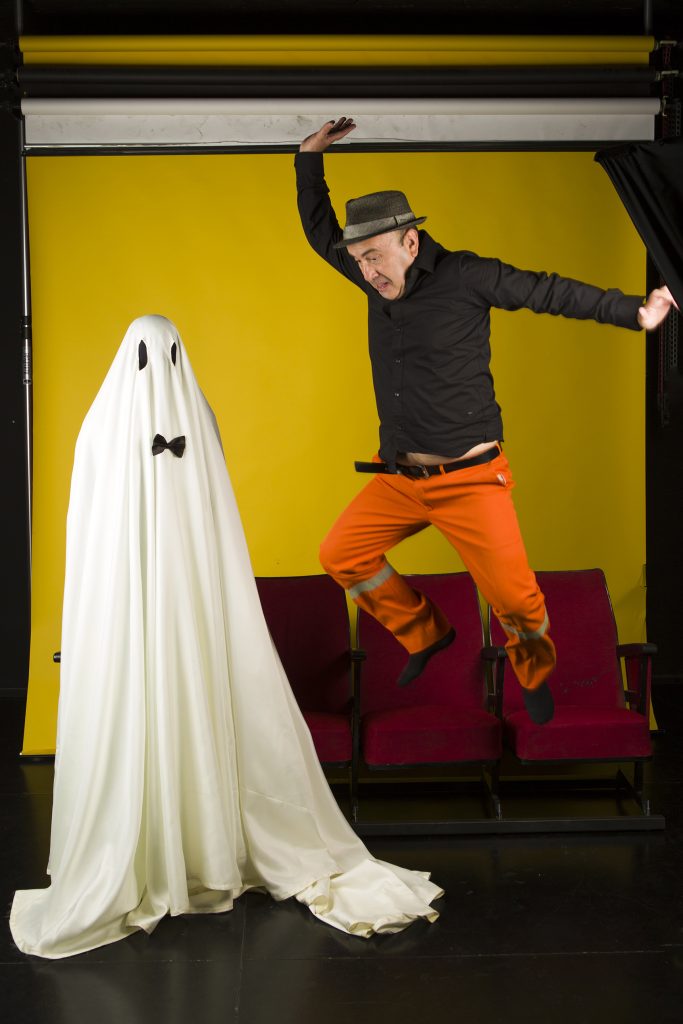
Three defining features of your style are localism, social criticism and the sense of humor. Did they emerge spontaneously or was it deliberate?
I think humor can hardly be deliberate; there is nothing less funny than someone who wants to be funny. The same goes for social criticism; I don’t even want to tell you the number of artists who ascribe to political art, for example, and are opportunists. My interest in the local can be said to be deliberate and has been increasing since 1999, when I made the exhibition Aldea Fatal.
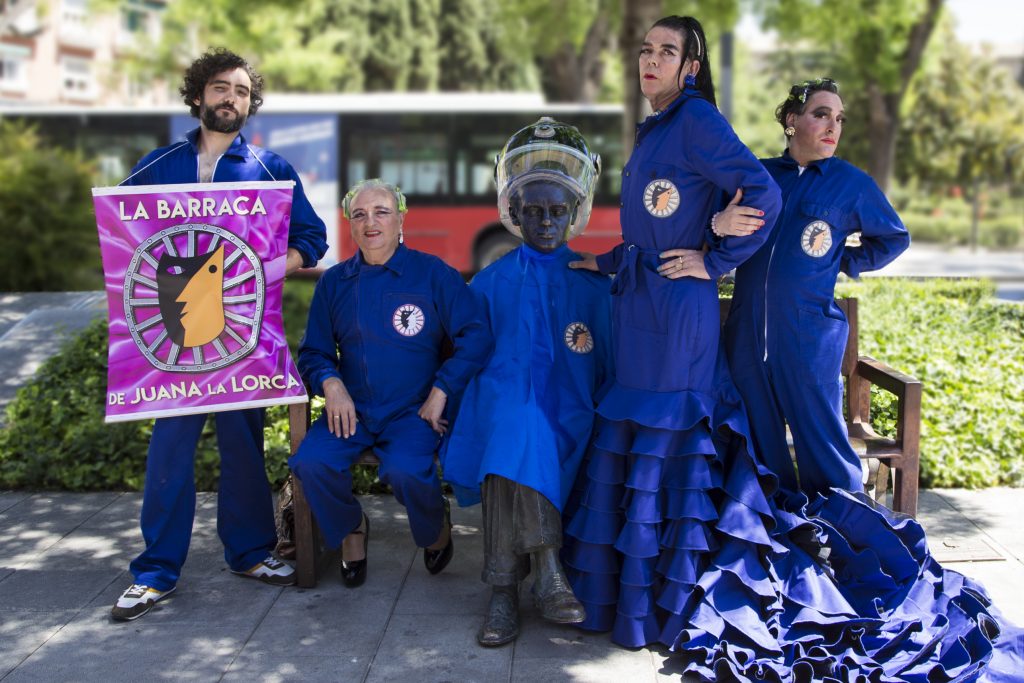
How did the character of Juana la Lorca come up?
I had long wanted to get my hands on Lorca, to denounce its commercialization and conversion into a competitive brand, but I felt a mixture of vertigo and laziness every time I looked into the lorquism. Until one day Juan Herrera appeared. He played a supporting character in my play La gitana superdotá and from then on, it was clear to me that I had to write something for him. His art, his grace, his self-confidence, his spontaneity, his gypsy spirit and his knowledge of Lorca’s work encouraged me to create this character through whom I could talk about all the aspects of Lorca that interested me (or that I hated).
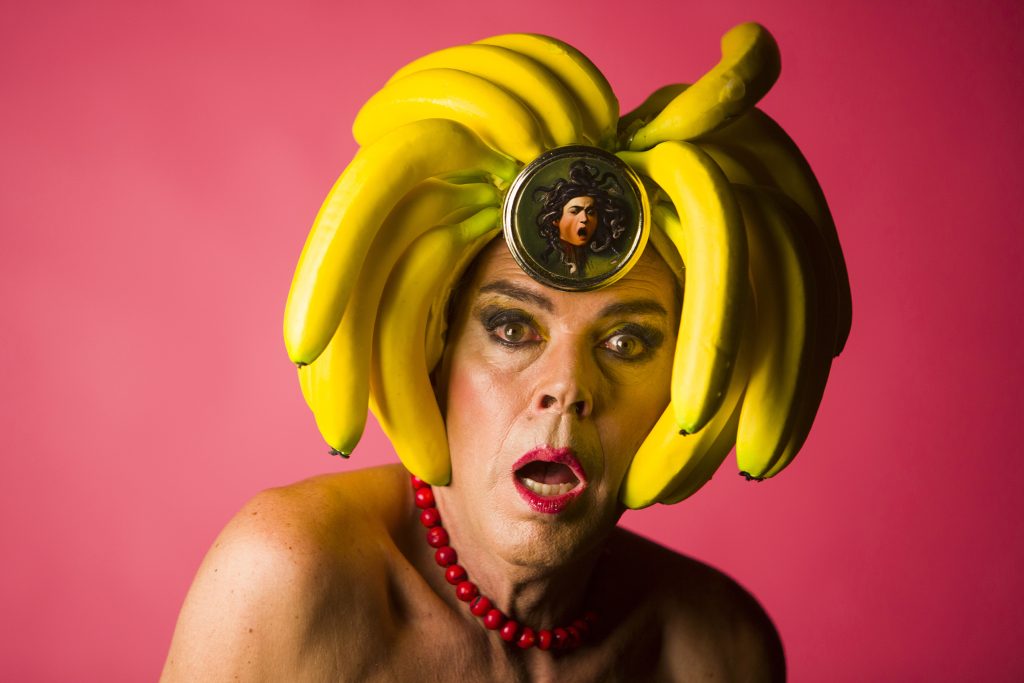
When using Lorca himself as a central element in Juana la Lorca, did you take into account that he is an artist in whom many interpretations converge?
Obviously. And Juana enters the chessboard by dynamiting the most rigid and stale clichés, that erudite orthodoxy that has turned Lorca into something untouchable, into a venerated saint. It is a “hand grenade” placed in the very bosom of the dogma that dismantles the pedestals. Juana is an “anarkolailo”, a rebellious queer gypsy, “temporarily” Lorquian who turns black grief into festive anarchy. Juana is a gypsy transformist artist who bursts into the Lorca framework with her feathers, wigs and false eyelashes to show that the Lorca myth has been built on make-up and retouching; a domesticated, constructed and invented Lorca. Juana is a transvestite Quixote who has set herself the mission of undoing this mess.

Besides directing films and being a visual artist, you work successfully in the performance field. Does the public always react as you expect?
There are artists who stick to a formula that works for them, but I like to take a gamble on every project. I move on a tightrope and I always go to my presentations terrified because I think I’m going to get beaten up.
You are from Granada like the father of Spanish experimental cinema, José Val del Omar. Both of you have used Granada as a theme: he with Water-Mirror of Granada and you through Lorca or Isabella the Catholic. What relationship do you have with Val del Omar’s work?
Val del Omar is immense, as we all know. I remember the impression his Tríptico elemental de España made on me. He is a creator who never ceases to amaze me, but I have not decided to maintain a relationship with him. After Lorca, I have no desire to repeat with another Granadian genius.
Me duele España is a Dadaist video-creation, and I dare say that it is also insolent. It reminds me of Jardiel Poncela’s phrase: “Humor is the zotal of culture”. When you create, do you keep in mind the tradition of Spanish humor?
The piece you refer to is as insolent as its protagonists. I could do nothing but be faithful to the collective I was documenting. As for my sense of humor, I owe it to my grandmother. She, being illiterate, had a humor inherited from a tradition that could be perfectly linked to The Quixote, The Lazarillo or The Celestina.
What place does cinema hold in a work as large as yours?
In the context of the Malaga Festival, someone who wanted to sink me said the following thing in a well-known media: “Valeriano López’s cinema is singular since his beginnings with Estrecho Adventure in the nineties. It is a cinema closer to performance or conceptual art than to cinema as such. Valeriano is more of an artist than a filmmaker, I think (…)”. And he was right; I am an intruder.
What advantages and disadvantages do you find for the production of your projects in the province of Granada?
The main advantage is that in Granada I have an important network of unconditional collaborators who are part of my emotional and professional life. The disadvantages could have to do with the industry but, as I operate outside of it, I can tell you little about it.
Finally, a typical question: What are you working on?
The typical answer is that I can’t tell you, but in a few days I will be leaving with a synopsis under my arm for the San Antonio de los Baños Film and Television School in Cuba.


